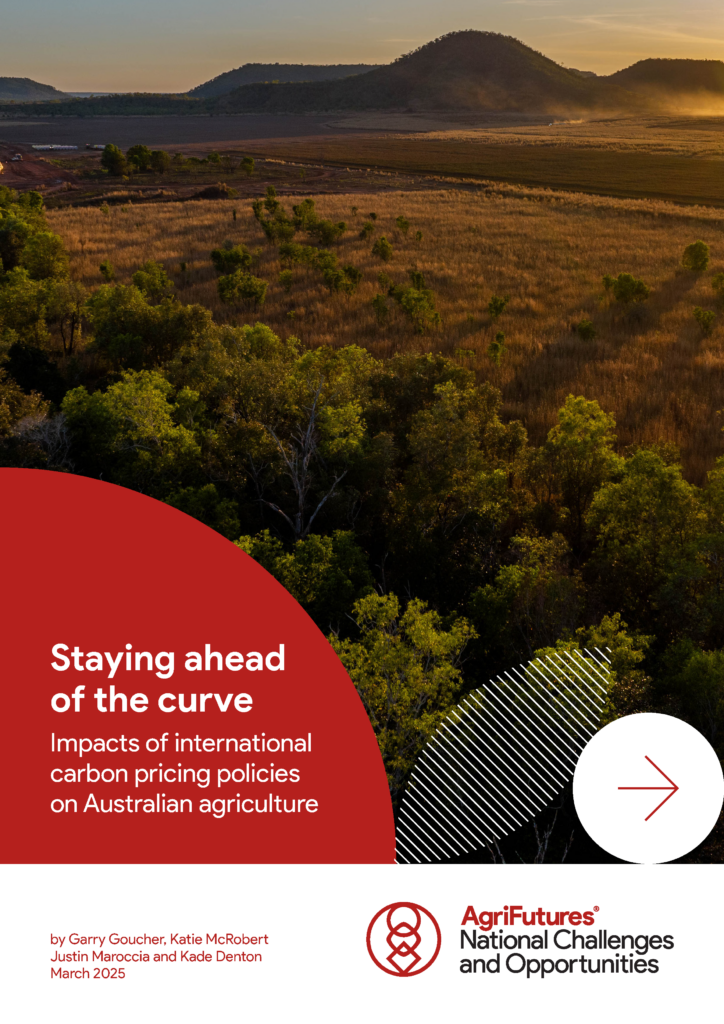In an increasingly carbon-conscious global economy, emissions reduction policies are reshaping trade dynamics and influencing the competitiveness of the Australian agriculture sector.
With more than 130 countries committed to net-zero targets by 2050 and many aiming for 40–50% reductions by 2030, such policies are evolving rapidly. The international policy environment is highly fragmented, with all countries adopting individual policies to achieve their commitments under the 2015 Paris Agreement. Australia, as a high-emissions export-based economy, faces the dual challenge of accelerating emissions reductions without disrupting trade flows.
While a uniform global approach to carbon pricing could create a level playing field, policies vary significantly across jurisdictions, leading to differing costs and competitive pressures. More-stringent emissions regulations can increase costs for producers and consumers, while producers in less-regulated markets may gain a competitive edge. These disparities in emissions reporting and regulatory stringency have important implications for trade and investment decisions.
At present, international carbon pricing policies have limited direct impact on Australian agriculture. Agricultural products have been largely excluded from emissions-based border levies, such as the European Union’s Carbon Border Adjustment Mechanism (CBAM). However, this may not be the case indefinitely.
As scrutiny on embedded emissions in traded goods increases, policy makers will be increasingly pressured to include agriculture in carbon pricing policies. Future emissions reduction policies are also likely to indirectly affect agriculture through higher costs and regulatory changes for key inputs, including fertilisers, transport fuels, electricity and agrochemicals. Furthermore, shifting social and consumer expectations for sustainable food production, coupled with changing global trade policies, will shape the operating environment for Australian agricultural producers.
Despite the relatively low near-term risks, Australia’s agricultural sector must remain vigilant to potential market and trade disruptions. International tax policies, trade restrictions and shifting consumer preferences may change rapidly, necessitating a proactive and adaptable approach. Diplomatic and trading relationships could shift suddenly in response to evolving emissions policies, requiring strategic positioning to safeguard the competitiveness of Australian agricultural exports.
To mitigate these risks, investment in research, development and extension (RD&E) will be crucial. Establishing comprehensive emissions accounting systems at the industry level will enhance transparency and enable proactive compliance with international trade requirements. Encouraging the adoption of emissions-reducing production practices, low-emissions fertilisers and renewable energy sources will further support sustainability and competitiveness. Additionally, strengthening industry participation in carbon markets and leveraging financial incentives for emissions reductions will provide economic benefits while helping producers align with future policy developments.
As the 2030 deadline for global emissions reduction targets draws closer, scrutiny of how carbon pricing policies are applied in markets is likely to increase. Pressure on countries to comply is likely to intensify, and disputes between signatories to the Paris Agreement could arise, particularly regarding emissions accounting methods. Added to existing confusion around rules-based trade and the application of tariffs, such pressure could exacerbate uncertainty in the global trade environment.
Delayed and inconsistent policy development has created uncertainty for the sector, hindering investment in emissions reduction technologies and slowing progress. Understanding the current indirect and potential direct impacts of carbon pricing policies is crucial for the sector to navigate risks and capitalise on potential opportunities as the global transition to a low-carbon economy accelerates.
While currently shielded from immediate risks, Australian agriculture must be proactive to ensure its long-term sustainability in an increasingly emissions-sensitive global economy. By prioritising robust emissions measurement, innovation, strategic trade positioning and financial incentives, the sector can navigate these challenges and maintain its competitiveness in the face of evolving international carbon pricing policies.
This report aims to inform strategic decision-making by highlighting key trends, risks and opportunities shaping the future of Australian agriculture in the context of evolving emissions policies.





